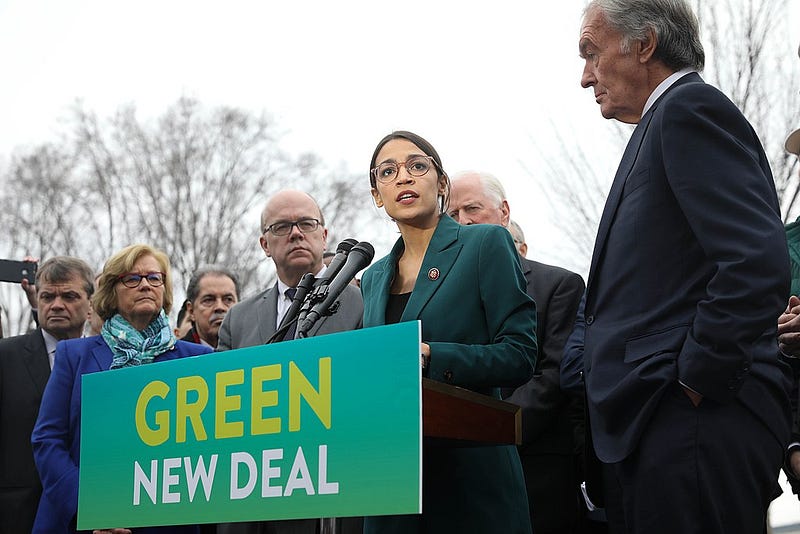Heating up in the Green New Deal
By Christina McConney, Biology, 2021

We have all heard about the Green New Deal — a ten-year plan proposed to gradually move away from a reliance upon a polluting economy into one that is kinder to the Earth. Reducing carbon emissions and embracing greener infrastructure is beneficial for everyone. From consumers to producers, there is not a single individual who would not benefit from the immensely positive environmental impact that this New Deal would bring.
Reducing carbon emissions and embracing greener infrastructure is beneficial for everyone.
But what does the Green New Deal mean from a scientific perspective? Political and social impacts are already known to revolve around the creation of new jobs with emphasis on stabilizing and sustaining the current economy. However, the implementation of environmental regulations that would enable the U.S to align itself with other developed countries is promising — the proposed plans are “data-intensive and evidence based,” according to an article in the Archives of Environmental & Occupational Health, aiming to cut greenhouse-gas emissions to zero.
The plan doesn’t solely focus on the environment, with economical attributes at the forefront of the plan as well; however, the “green” aspect is one of the main focuses of the proposed deal. With 69 percent of Americans at least “somewhat” worried about global warming, it makes sense that major portions of the plan focus on environmental impacts. However, there is some hesitation from scientists about the feasibility of the plan. Voices of Ken Caldeira, atmospheric researcher at the Carnegie Institution for Science, and Ernest Moniz, nuclear physicist and Secretary of Energy under former President Obama, express the circulating disbelief of the ability to reach a full net-zero carbon emission within the proposed ten-year period.
With 69 percent of Americans at least “somewhat” worried about global warming, it makes sense that major portions of the plan focus on environmental impacts.
Whether or not the net-zero plan is fully accomplished by 2030 as many scientists and politicians are pushing for, the fact remains that action needs to be taken to reduce pollution produced by the U.S by moving towards renewable energy forms. China and Korea have invested 3 percent and 5 percent, respectively, of their total gross domestic product (GDP) towards long-term strategic plans to move their industries to focus around cleaner forms of energy such as solar panels and wind turbines. While the U.S remains stuck in the age of a lucrative but environmentally devastating brown economy, the proposal of the Green New Deal brings new hope to the success of implementation of any environmental regulations. With global temperatures rising to 1.5 degrees Celsius above pre-industrial levels, something needs to change — and soon.
DOI: 10.1177/1048291119855671
DOI: 10.1080/19338244.2019.1608667
